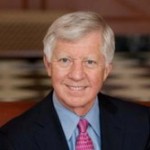Oct12
AG Lafley, Jim Collins, Al Gore: First Step in Innovation (World Business Forum #wbf10)
Point: Admitting ignorance is a crucial first step to building strong knowledge that leads to innovation.
Story: Many of the 2010 World Business Forum presenters spoke authoritatively about what we know about business and economies. But Steven Levitt (author of Freakonomics and Super-freakonomics) highlighted a systemic blindside in what businesses and leaders know. In his discussions with companies, Levitt found that business people fear saying, “I don’t know.” Such an admission seems to them like a reputation-damaging weakness in the eyes of their coworkers, bosses, shareholders, and customers.
Yet being unwilling to admit ignorance carries at least three types of stiff penalties. First, the arrogance of presumed omniscience leads to hubris, which is the first stage of downfall, according to research by Jim Collins, author of bestsellers Good To Great and How the Mighty Fall.
Second, by not admitting ignorance, companies underinvest in gathering and creating knowledge. If we claim to already know something (e.g., “we know our customers”), then why invest in gathering more knowledge about them? Third, and ultimately, willful ignorance are leads to mistaken decisions and failed innovation. No wonder 90% of new product launches fail, according to data cited by Martin Lindstrom (author of Buyology).
Admitting ignorance need not signal weakness. Saying “I don’t know” isn’t the same as saying “I can’t know.” A number of the presenters described four concrete ways of reducing ignorance.
First, A.G. Lafley (former CEO of P&G) stressed the value of reducing ignorance about customers simply by listening to them and watching them as they naturally interact with the company’s products. P&G spends a lot of time and money trying to understand the two moments of truth — when the customer chooses products in the store and when the customer uses products in the home. Even as CEO, Lafley made a point to visiting ordinary consumers and stores when he traveled. These visits demonstrated to all P&G employees the importance of learning more about customers from the customers themselves. The point is the listen more and go out in the real world — admitting (and resolving) ignorance about how customers really use products and services. Charlene Li, author of Open Leadership and Groundswell, likewise stressed this point and cited the new-found power of social media to let companies hear what real people are saying about the company (see previous post: Getting CEOs on Board with Social Media).
Second, Martin Lindstrom showed exciting new tools such as fMRI (functional Magnetic Resonance Imaging) and SST (Steady State Topography) that can trace the activity of the subconscious parts of the brain. With these tools, innovators and other business researchers can answer previously unanswerable questions about people’s innermost reactions to brands, products, and sensory cues associated with new or existing ideas. With these tools, Buyology researchers can show how just the red color of a Marlboro cigarettes pack or the angular shape of a McDonald’s restaurant roof triggers a reaction in consumers. These new technologies help business resolve age-old ignorances about why people really buy.
Al Gore (former Vice President of the US and Nobel Peace Prize-winning creator of An Inconvenient Truth) gave an impassioned plea for responding to global warming before more dire effects take hold of the planet. His presentation illustrates a third tool for reducing ignorance: developing deep models to estimate the direct and indirect effects of various phenomena. For example, climate models help predict the ongoing rise of humidity and the concomitant rise in the severity of storms such as those that caused this year’s floods in places like Nashville and Pakistan.
Modeling does come with risks. Levitt criticized prevailing economic models for focusing too much on what was mathematically easy rather than what was relevant to real economies. People need to validate the model by showing, for example, that the last 60 years of temperature increases track the increase predicted by climate models. Good modeling helps people reduce ignorance about what might happen without the full costs of making it happen.
Finally, testing represents the natural culmination of the other ignorance-reducing tools: will an innovation or new idea really work? Levitt recommended doing more experiments — testing the effects of changing the price, changing the advertising, changing the product features, and so on. Levitt also suggested leveraging accidental tests. For example, when an intern at a consumer electronics company forgot to submit newspaper ads for three months in one local market, the company discovered that the lack of newspaper advertising had caused no corresponding drop on sales. Lafley likewise encouraged managers to test new ideas, even if they couldn’t get permission beforehand. Resolving ignorance is too important to be stymied by bureaucracy. Moreover, testing need not be expensive these days. A.G. Lafley noted how much easier it is to test new packaging and merchandising innovations in a computer-based virtual 3-D simulation. P&G can create an accurate 3-D model of a consumer’s favorite retailer and graphically add and test new designs. Changing the color, shape, size, graphics, etc., only takes the click of button. Cost is no longer an excuse for ignorance.
Action:
- Admit ignorance and document what you don’t know but would like to know.
- Watch and listen by going out to customers and the world to glean potential insights and innovations.
- Use new data collection technologies to answer previously unanswerable questions.
- Build models to predict the impact of innovations and other changes in products, processes, and business.
- Test innovation hypotheses via various methods such as virtually, in test labs, or in select markets.
1 Comment »Case study, CEO, How-to, Innovation, Uncategorized












